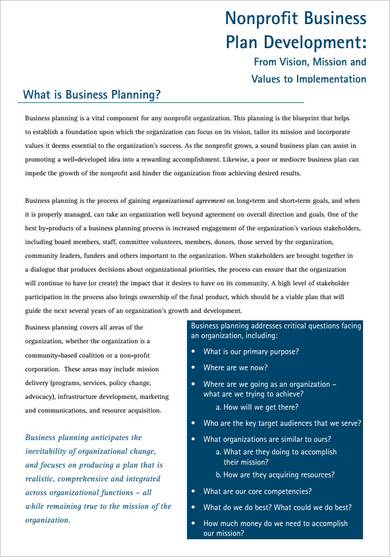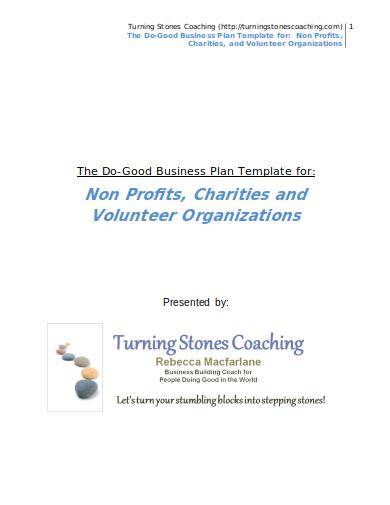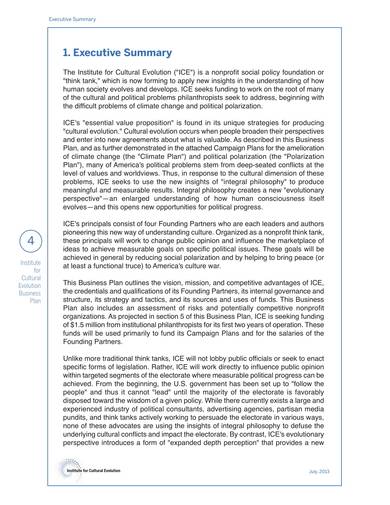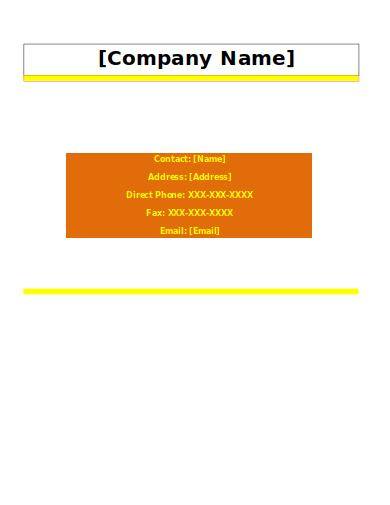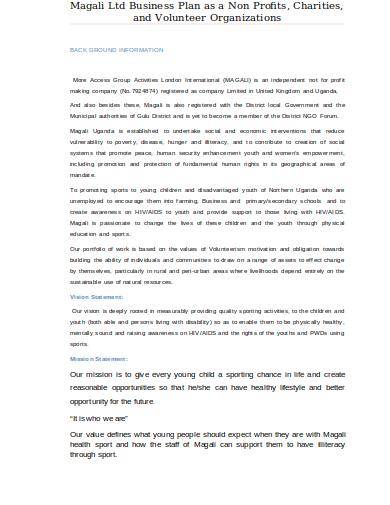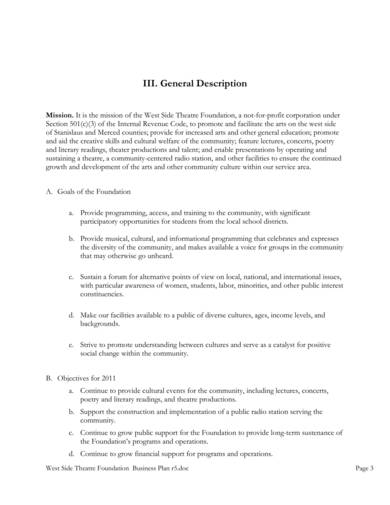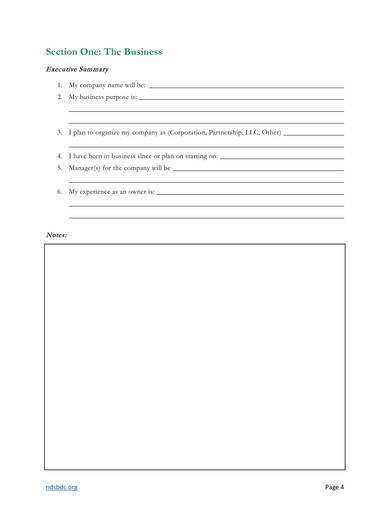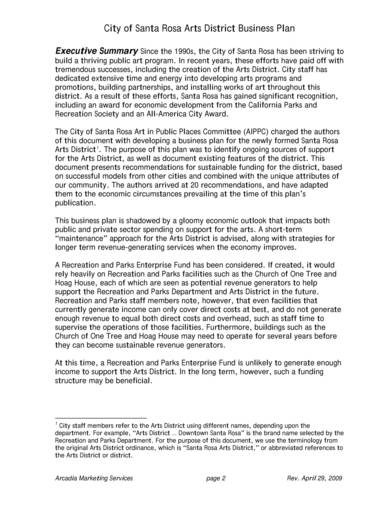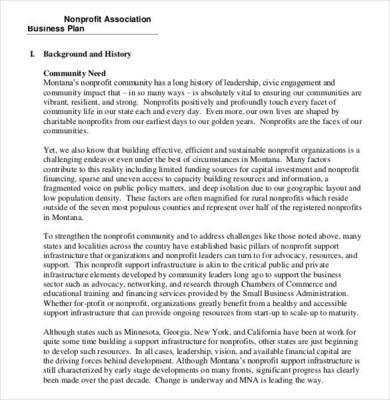Ask anybody you know, and more likely than not, they’ll associate companies and organizations with profit. It’s an easy connection to make, but we also know that nonprofit groups exist. For nonprofit workers, the need for business plan examples cannot be overstated. In this article, we’ll be discussing the topic of the nonprofit business plan while giving you professional examples of what an effective nonprofit business plan should be.
Ask anybody you know, and more likely than not, they’ll associate companies and organizations with profit. It’s an easy connection to make, but we also know that nonprofit groups exist. For nonprofit workers, the need for business plan examples cannot be overstated. In this article, we’ll be discussing the topic of the nonprofit business plan while giving you professional examples of what an effective nonprofit business plan should be.
16+ Nonprofit Business Plan Samples
1. Sample Nonprofit Business Plan
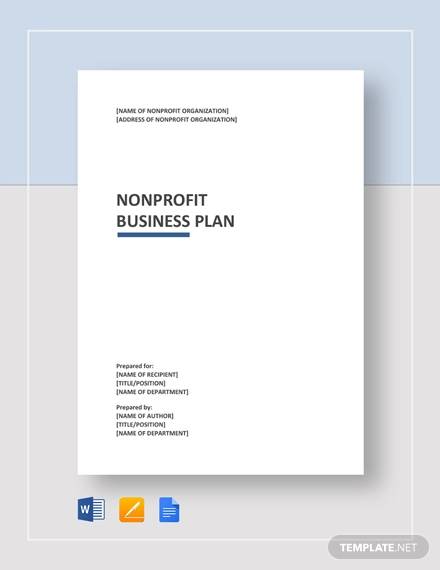
2. Nonprofit Marketing Plan Template
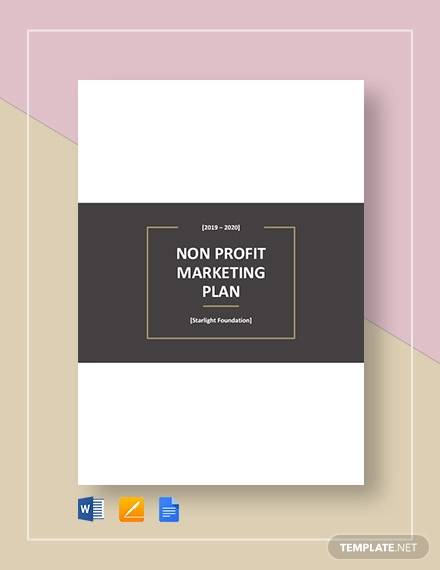
3. Nonprofit Strategic Plan Template
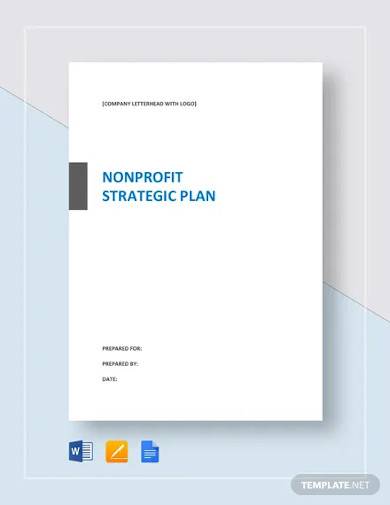
4. Sample Fundraising Plan Template
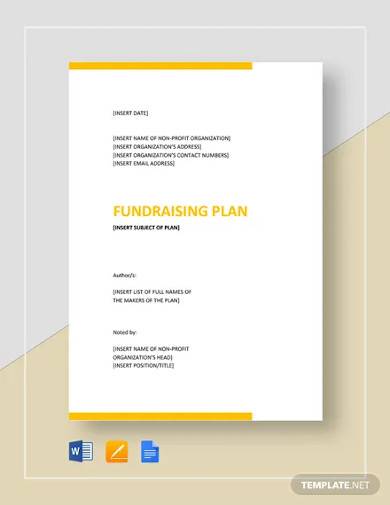
5. Annual Fundraising Plan Template
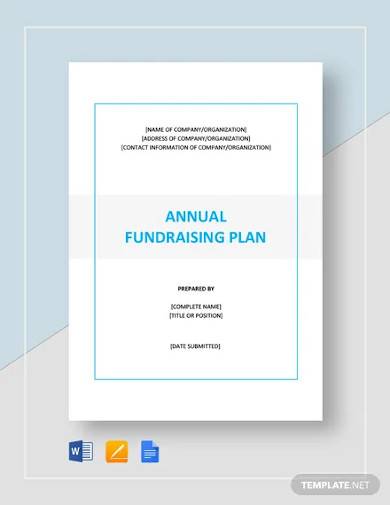
6. Charity Fundraising Plan Template

7. Non Profit Fundraising Plan Template
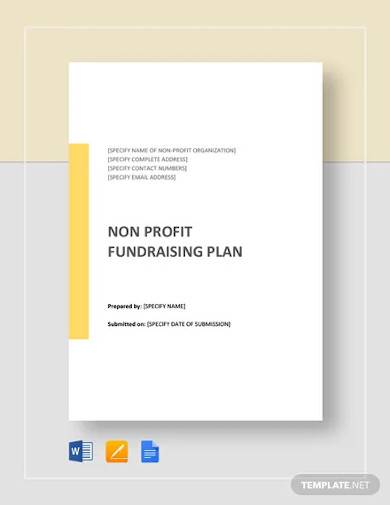
8. Nonprofit Business Plan Development Sample
Creating a business plan for a nonprofit organization or any organization is a challenging task. That is because of the many factors that one must consider in its development. So before you start with writing your business plan, you first need to know about the basic and essential things there is to learn about a business plan. This nonprofit business plan development sample is the perfect tool to use to help you get started. You should check it out now!
9. The Do-Good Business Plan Template
The do-good business plan template is customization and a print-ready template that will help you create a reliable business plan for nonprofit organizations, charities, and volunteer organizations. It has a catchy and unique name to it and uses an elegant layout design. You can learn a lot by using this template and also be guided on how you should write the contents of the entire document. This sample plan template is sure worth your time.
10. Printable Nonprofit Business Plan Sample
How do you take advantage of business plan samples? There are a lot of ways on how you can take advantage of business plan samples, and the most obvious way is by using them as reference or guide materials. There is no doubt that a lot can be learned from various samples, especially if they are those that are relevant to what you are looking for. This printable nonprofit business plan sample is just one of the many samples that you will find helpful.
11. Nonprofit Social Services Business Plan Template
12. Business Plan for Nonprofits, Charities, and Volunteer Organizations
13. Nonprofit Organization Business Plan Sample
14. Foundation Business Plan Sample
15. Blank Business Plan Template
16. Nonprofit Arts District Business Plan Sample
17. Nonprofit Association Business Plan
What Is a Nonprofit Business Plan?
The document you are about to learn more about can be referred to in different ways. You may call it a nonprofit organization business plan, for one. Then there’s the nonprofit strategic plan. Regardless of what specific term you have for it, the purpose remains the same. This is used to help map out the direction in which the organization intends to travel on for the next few years. The details contained within—such as the nonprofit budget—may be short, middle, or long-term. With this at any nonprofit’s disposal, donations and investors are much easier to come by, and there will be far less worry in regards to its immediate future.
Steps to Crafting Your Own Nonprofit Business Plan
It’s easy to download items like a nonprofit strategic plan template or a one-page nonprofit business plan template. Perhaps that’s why some people prefer to make their business plan from scratch—it’s just more challenging, which is fun for those people. If you’re one of them, here’s your chance to write your plans. These tips will help you reach the level of success that you’ve always wanted.
1. Know Your Audience
Just like with a retail marketing plan, for example, you need to know who your stakeholders are. Although you can just write without any worry about who is eventually going to need it, an audience-focused document will lead to far greater success. Determine your audience, and we guarantee your business plan will be much more effective.
2. Do Your Research
Business is rarely without necessary research data collection. It’s not a good idea to base everything off assumptions, even if what you’re trying to accomplish is relatively low-risk. Do extensive research on your marketing, your finances, and other vital areas of consideration.
3. Don’t Be Stingy with the Details
No business plan succeeds by being vague, especially when it comes to product development and services. This is the same, even for nonprofit groups. Be as clear and specific as you possibly can. Take note that you can still be concise with your work, provided that what you’ve written is easy to understand and can educate the readers about your cause.
4. Don’t Forget the Executive Summary
Having an executive summary can help clue readers in from the get-go about what you’ve got in store. After all, this is where you can dictate your organization’s mission, vision, and values. Don’t be tempted to think that this isn’t necessary; write it last, but place it first on your business plan for the readers’ benefit.
FAQs
Should you stick to a specific format?
That’s not necessary as long as you adhere to the common elements like consistency in overall formatting paper, the use of 1-inch margins, and checking for errors.
Can I operate a nonprofit organization from home?
Many businesses—both profit and nonprofit—start at their founders’ homes. Doing so is practical for several reasons, such as not having to spend on a rental property.
How much do nonprofit CEOs make?
Judging by the average salary history of nonprofit CEOs, it stands that these individuals make up to $120,000 in a year.
It’s pretty exciting to learn about the nonprofit side of organizations, isn’t it? By now, it’s clear that there’s more to a business plan for the nonprofit organizations than initially thought. You can now confidently say that your knowledge of how to write a nonprofit business plan and its many nuances are greater than it was before. So do us all a favor and put what you’ve learned here to good use today!
Related Posts
Work Plan Template - 20+ Download Free Documents for Word ...
Sample Behavior Management Plan - 8+ Examples in Word, PDF
16+ Boutique Business Plan Template - PDF, Word
Sample Research Plan - 11+ Documents in Word, PDF
Sample Spend Plan Template - 9+ Free Documents Download in ...
Sample Music Lesson Plan Template - 9+ Free Documents in PDF ...
Unit Plan Template - 11+ Download Documents in PDF , Word
Sample Catering Business Plan - 10+ Examples in Word, PDF
7+ Sample Sales Action Plans - Free Sample, Example, Format ...
12+ Implementation Plan Templates - PDF, Word, Google Docs ...
8+ Sample HR Action Plan - Free Sample, Example, Format Download
Sample Photography Business Plan - 10+ Examples in Word, PDF
Sample Financial Plan - 10+ Documents in Word, PDF, Excel
Sample Lesson Plan Objective - 6+ Examples in Word, PDF
Sample SBA Business Plan Template - 9+ Free Documents in PDF ...

